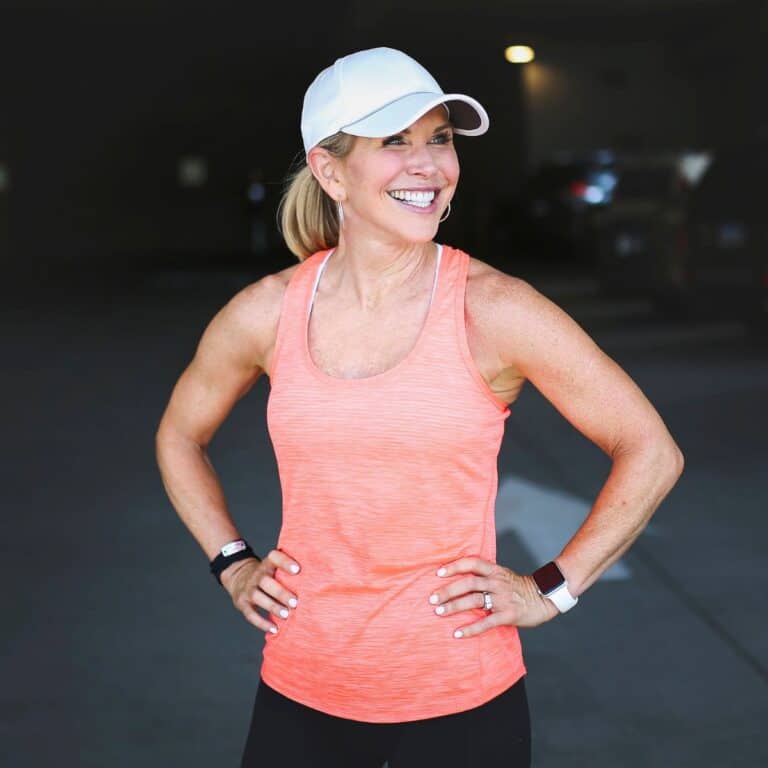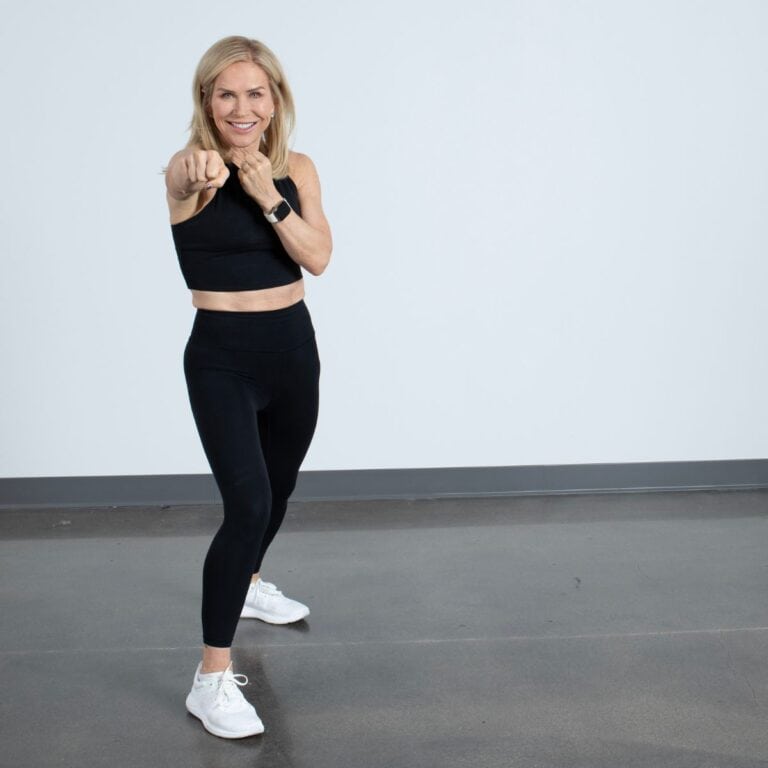Let’s be real—people assume that because I’m a personal trainer, I’m exercising all day long. Nope! I may crush a workout every morning, but the rest of my day? It’s a whole lot of sitting at my computer, running a digital platform for workouts (which, ironically, means I’m pretty sedentary).
That’s why my walking pad has been a total game-changer. I’ve always known the power of simply moving more—getting in steps, staying active throughout the day, and avoiding the dreaded “desk slump.” But living in Minnesota, where winter can make outdoor walks miserable (or downright impossible), I needed a solution.
Enter: the walking pad.
This little under-desk treadmill has completely transformed my daily routine, and I can’t wait to tell you why it might be the best thing you add to yours.
Get the Latests Posts to Your Inbox
Join over 100,000 followers who are inspired to make healthier lifestyle choices as they age!
My Personal Journey with the Walking Pad
I started off slow—literally. When I first got my walking pad, I eased in at a casual 1-2 mph, using it while answering emails, taking calls, and reviewing documents. Over time, I adopted a sit/walk approach to my workday, alternating between moving and sitting depending on my tasks.
If I need full concentration (like writing this article!), I sit. But for everything else? I’m walking.
I first learned about the power of easy, consistent movement—often called NEAT (Non-Exercise Activity Thermogenesis)—when I met Dr. James Levine from the Mayo Clinic about 15 years ago. His research showed that everyday movements like walking, fidgeting, and even standing play a huge role in calorie burn and overall health.
In fact, his studies linked prolonged sitting to increased risks of obesity, heart disease, and metabolic issues—basically making the case that movement isn’t just about workouts; it’s about how we live our day-to-day lives.
That’s when I discovered the walking pad—a solution that lets me stay active without disrupting my work or downtime. I decided to incorporate it into my routine for a few key reasons:
Low-Impact Exercise – Walking is easy on the joints, making it perfect for those of us over 50. (Check out 7 more ways I prevent join pain during exercise in my 50’s!)
Convenience – It fits right into my home, so I can walk while working, reading, or even watching TV.
Time Efficiency – It lets me multitask, ensuring I stay active even on my busiest work days.
As I said, I alternate between walking and sitting. This simple shift has helped me easily hit (and often surpass) 10,000 steps daily—without needing to carve out extra walking time.
I used to be a runner, but I do a lot differently at 59 vs. 39. Walking is now one of my favorite forms of exercise!
I keep my walking pad under my kitchen counter (though a standing desk works great, too), allowing me to answer emails, write, or hop on virtual meetings—all while staying in motion. It’s proof that movement doesn’t have to be complicated.
Sometimes, the simplest changes make the biggest difference!
What Is a Walking Pad?
A walking pad is essentially a slimmed-down, budget-friendly version of a treadmill, designed specifically for walking rather than running. With a smaller tread belt and motor, it keeps things simple—no fancy incline settings or high-speed options.
Most models top out around 3 mph, making them ideal for steady, low-impact movement.
One of the biggest perks? The price. While a full-size treadmill with all the bells and whistles can set you back anywhere from $1,000 to $8,000, you can snag a walking pad for as little as $150. Plus, it’s portable!
I just wheel mine into my front hall closet when I’m done, which makes it super convenient and easy to use in different spaces around my house.
For me, the walking pad started as a way to keep moving during my work-from-home days, but it’s also become my go-to in the winter. When it’s freezing outside, I love hopping on for a slow walk while watching my favorite TV shows—staying active without braving the Minnesota cold!
Choosing the Right Walking Pad
Most are pretty similar in terms of weight capacity and speed range. I also read the customer reviews to see what people are saying who have used them. Here are the two walking pads I have and use regularly. (I decided to test out two different brands.)
I’ve honestly been satisfied with both- they operate pretty much the same.
The Urevo walking pad allows me to change the speed in .1 increments whereas the Cursor walking pad goes from 10 to 1.2 to 1.5. Not a big deal but the one difference I’ve noticed.
The Science-Backed Benefits of Walking
Walking offers numerous health benefits:
Physical Health
Improved Cardiovascular Health: Regular walking strengthens the heart and enhances circulation.
Bone Density: Weight-bearing activities like walking help maintain bone density, reducing the risk of osteoporosis.
Weight Management: Consistent walking aids in burning calories, supporting weight control.
Muscle Strength and Joint Health: It tones muscles and supports joint flexibility.
Blood Sugar Regulation: Walking can help stabilize blood sugar levels, reducing the risk of type 2 diabetes.
Mental Health
Stress Reduction: Physical activity releases endorphins, helping to alleviate stress.
Mood Enhancement: Regular movement can boost mood and combat feelings of depression.
Improved Sleep: Engaging in regular physical activity can enhance sleep quality.
Cognitive Function: Walking stimulates brain function, potentially improving memory and focus.
Incorporating a walking pad makes these benefits more accessible, especially for those with busy schedules or limited space. Its compact design allows for easy storage, and its quiet operation ensures it won’t disrupt your work or household activities.
Common Concerns & Misconceptions about Walking Pads
It’s natural to have questions about integrating a walking pad into your routine. Let’s address some common concerns:
Cost: Most are between $100-$300.
Space: Walking pads are designed to be compact and often foldable, making them suitable for small spaces.
Noise: Most models operate fairly quietly, ensuring minimal disruption. But remember – it has a motor so there is some noise.
Effectiveness: Even at a slow pace, using a walking pad can help you achieve daily step goals and provide significant health benefits.
Tips for Maximizing Benefits
Proper Posture: Stand upright, keep your core engaged, and look ahead while walking.
Speed Variations: Adjust the speed to match your comfort and activity, whether working or watching TV.
Session Duration: Start with shorter sessions and gradually increase as your endurance builds.
Footwear: Wear supportive shoes to ensure comfort and prevent injury.


